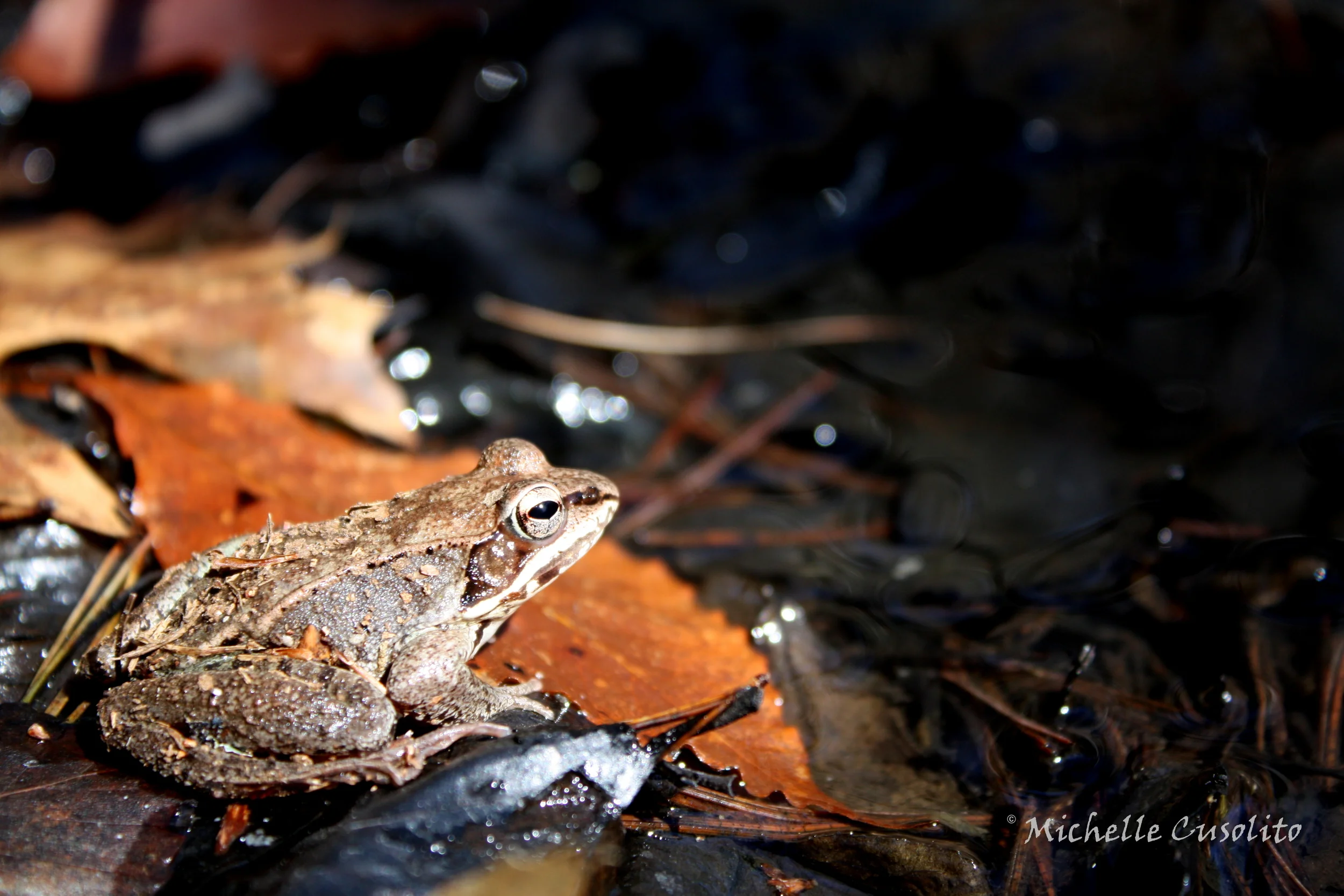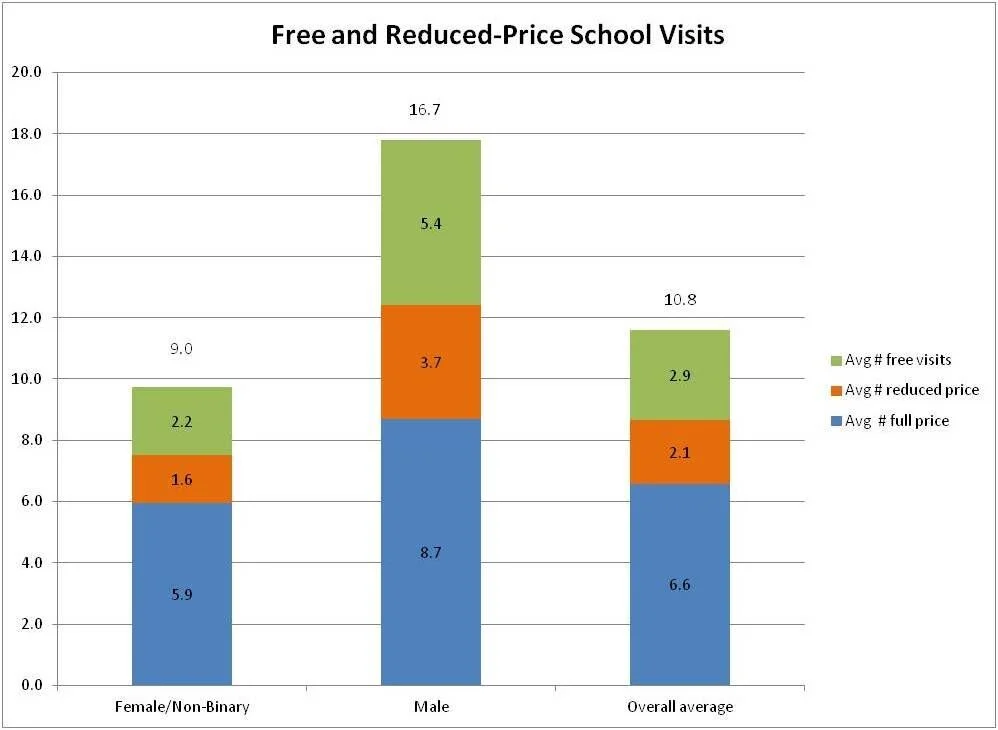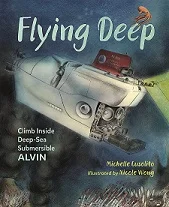EDITED TO ADD (links to earlier posts):
If you’ve landed here directly, please go back and read our earlier posts to get the context.
82 percent of our survey respondents did at least one school visit for a reduced rate or for free in the last year.
This was the aspect of our survey that received the most comments. Many people commented that schools or booksellers expected them to do the visits for free, or that they were often asked to reduce their fees. Some people were ok with these expectations/requests, but most expressed frustration that they didn't feel their time was valued.
Here is what respondents had to say about the complexities of reduced price and free visits:
They reserve a number of free and/or reduced rate visits each year for low-income school districts:
“I rarely take school visits that are free except for two inner city schools I adopted. I am learning that pricing $750 for local visits and $1,000 for out of state is too low.”
“I have tiered rates where I give lower rates to local visits and low-income schools.”
“I do schools in my home school district every year (i.e., I see the first graders every year for a certain program, the second graders every year, etc). Those are the visits that I do at a discounted rate, as a thank you to my local school system and gratitude for the repeat visits.”
“ There are many free/reduced lunch schools in the local area of my hometown. I waive my fee for them. Generally, they will give me a small stipend for travel.”
They experience bargaining from schools when booking a visit, and end up negotiating their rates downward:
“When I speak to schools about visits or even teachers, it is always, ‘The school doesn't have money to pay you, we can give you a basket of your favorite candy.’ That doesn't pay bills. There are too many schools expecting free school visits to help encourage children, but when schools do not pay at all, how can they expect us to want to go encourage them to also work for free?”
“I have found that schools almost always try to negotiate my fees down. My husband, also an author/illustrator, is almost NEVER asked to negotiate his fees.”
“I am always, without fail, asked to take less than my stated full day’s amount. I’ve looked at other honorariums from other authors and I’m already charging less. One event coordinator said, “we usually get ____ (my publisher) for cheaper than this.” I checked. Not true. I’ve decided to cut out school visits completely for a year, beyond the ones assigned for tour by my publisher. The back and forth takes a toll on my time.”
They charge by the hour and are rarely booked for a full day:
“I don’t usually do full day visits. Instead, I do a one hour workshop once or twice in a day. For that, I charge $100-$250 per hour.”
They live in a region experiencing economic hardship, so they discount all visits in their region:
“Most schools in the south don't have any money to pay for author visits. (They barely have money to maintain libraries.) In many cases I either do the visits for free, or for a reduced rate or I help librarians to find grants.”
“It is easier to get full paying school visits out of my state than in my immediate area.”
“Michigan has been a depressed state for school money since the recession of 2006. It's coming back now, and schools have a little more money now, but that's only recent, in the past two years or so.”
They modify their prices based on book sales by the school:.”
“I waive my fee in favor of a minimum book purchase. Schools have to agree to sell anywhere from 15-30 books (depending on the school). As a newer author, these tend to be far more productive. Most schools will not pay to bring me in, but will agree to the minimum book purchase because I have a strong history of sales at these visits, and they know if they sell a certain amount, they'll get my services for free (but I also know I'm getting a lot out of it, as I can move as many as 150 copies in a single school visit)”
The Numbers
Several female respondents said that they feel pressured to lower their rates more often than they believe men are. Our survey can’t capture the complexity of this situation, because we don’t have information on the school visits that didn’t happen, or the amount of times people were asked to reduce their rates and said no.
Of the visits that did happen, however, male respondents on average did more total visits, more free and more reduced rate visits.
Note this graph is based on survey respondents’ reporting of their full-day school visits. We will talk about publisher-sponsored visits, which are generally one assembly per school, later in this post.
About half of male respondents’ visits were free or reduced price visits.
About one-third of female/non-binary respondents’ visits were free or reduced-price visits.
Men did 32% more full-price visits (8.7 vs 5.9) but they did 58% more free/reduced visits, which widened the gap in number of visits.
Respondents who don’t charge
Eight percent of our survey respondents (35 people) said they did all of their school visits in the last year for free. From comments, we learned that multiple things are going on with free visits. Some of the reasons given were:
They consider their school visits a charitable contribution, and therefore do not ever charge.
“I never charge taxpayer supported institutions. I never will.”
“I know that many authors discourage making school visits for free. However, I enjoy visiting schools and donating my time to make a difference in kids' lives. Sometimes I will sell a few books, which is great. I understand that some authors are trying to make a living doing school visits, but many, MANY public schools simply do not have a spare dollar to spend. Why should these schools, who need the visits more than the wealthier schools, frankly, suffer? I feel good visiting these schools and interacting with the students, regardless of their ability to pay me.”
They do free school visits in exchange for book sales.
“Being relatively new I have offered my visits for free in exchange for book sales, which has made me some $ and connections
They are asked to do visits for free by friends or family members.
“I love doing them but rarely get paid. Often I do them for favors, for friends kids' schools nearby. But I'm tired of being nice and kind and available for favors for nothing. It doesn't do my self esteem any good and it's exhausting.”
“As someone just getting started it’s hard to know what to charge. I also feel pressured to do visits for free for friends.”
All of their school visits are publisher-sponsored visits, done as part of a book tour.
“I have done hundreds of school visits in last ten years, mostly on tour, but have never charged. My current policy (with wealthier schools) is to require purchase of 100 minimum paperbacks at the school and to ask that same amount of books be donated to a charity or local needy school.”
Looking only at the respondents who did all of their school visits for free, there is a gender gap in the average number of visits done in the last year.
Male respondents did an average of 22.4 free visits.
Female/non-binary respondents did an average of 5.3 free visits.
Publisher-sponsored school visits
Publisher-sponsored visits are usually a part of a book marketing tour. Authors may visit multiple schools in one day, doing one assembly at each one. The publisher pays for the author’s travel, and works with local bookstores to sell books. Bookstores set up events both in their stores and at local schools that are likely to have significant book sales. Note that authors are not paid directly for these school visits.
Publishers only sponsor school visits for a portion of their books, generally ones that have a book tour as part of their marketing. 19 percent of our respondents (80 people) did at least one publisher-sponsored school visit in the last year.
Together, these 80 respondents did 787 school visits sponsored by publishers.
Male respondents with publisher-sponsored visits did an average of 11.9.
Female/non-binary respondents with publisher-sponsored visits did an average of 8.5.
Awards & Publisher-Sponsored Visits
Since publisher-sponsored visits are an expense taken on by the publisher, one would expect that authors who have won major awards or who have been NYT bestsellers would have more publisher-sponsored visits than those who have not. And that is the pattern we see in our survey responses for men. However, winning an ALA/ALSC/affiliated award did not translate into more publisher-sponsored visits for female/non-binary respondents. In fact, female/non-binary award winners had a lower average number of sponsored visits.
These patterns are intensified when we look at the intersection of race/ethnicity and gender. Female/non-binary winners of national ALA/ALSC awards had fewer publisher-sponsored visits than male respondents who did not win awards
Female/non-binary respondents who have won a national ALA/ALSC award had a lower average of publisher-sponsored visits than men who had not won one of these awards. (8.3 vs. 10.3)
Men who have won ALA/ALSC awards did twice the number of publisher-sponsored visits as men who have not. However, women do not see the same increase in numbers.
Publisher-sponsored visits are an indicator of the extent of a book marketing tour, but only a very rough indicator. Some tours may include mostly school visits, others may be weighted toward bookstore events. Our survey was focused only on school visits, so we did not ask about other author/illustrator events done in the last year.
What next?
Our final post will be some of our thoughts regarding what we can all do. We welcome your suggestions. Please leave them in a comment on this post. (Not via Twitter or FB. We won’t be able to track all of those places). If you prefer to be anonymous, you can email me and I promise I will not reveal your identity. michelle(at)michellecusolito(dot)com
We would also love to hear your thoughts on pay transparency and the gender gap in author/illustrator school visits. While we are unlikely to single-handedly change the gendered nature of caregiving work, together we can take small steps toward increasing equality in children’s literature.
About the authors of this study
We (Jeanette Bradley and Michelle Cusolito) volunteered our time and expertise to bring you the results of this survey. We’d appreciate any support you might offer us in return. Perhaps you could buy our books (or rather, pre-order Michelle’s), request them from the library, tweet about them, or write a review if you’ve read them and enjoyed them. Thank you for considering.
Jeanette Bradley has been an urban planner, an apprentice pastry chef, and the artist-in-residence for a traveling art museum on a train. (Yes, she is a data nerd who can draw.) Her debut picture book LOVE, MAMA was published by Macmillan/Roaring Brook Press. It contains no cities, pastries, or trains, but was made with lots of love. She currently lives in Rhode Island with her wife and kids. Jeanette is represented by Emily Mitchell of Wernick & Pratt.
You’ve landed on Michelle’s blog/website, so you can poke around to learn more about her. In case you missed it, here’s the cover of Flying Deep, which comes out May 22nd.





